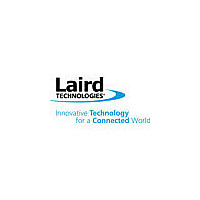ZB2430-Q-E-S-U Laird Technologies, ZB2430-Q-E-S-U Datasheet - Page 17

ZB2430-Q-E-S-U
Manufacturer Part Number
ZB2430-Q-E-S-U
Description
MOD ANT CONN ZIGBEE 2-100MW U.FL
Manufacturer
Laird Technologies
Series
AeroCommr
Datasheet
1.ZB2430-D-C-S-A-EVB.pdf
(62 pages)
Specifications of ZB2430-Q-E-S-U
Frequency
2.4GHz
Data Rate - Maximum
250kbps
Modulation Or Protocol
802.15.4 Zigbee
Applications
AMR, ISM, Security and Access
Power - Output
10dBm ~ 20dBm
Sensitivity
-99dBm
Voltage - Supply
3 V ~ 3.5 V
Current - Receiving
27mA
Current - Transmitting
25mA
Data Interface
PCB, Surface Mount
Antenna Connector
U.FL
Operating Temperature
-40°C ~ 85°C
Package / Case
Module
Lead Free Status / RoHS Status
Lead free / RoHS Compliant
Memory Size
-
1 2
T H E O R Y O F O P E R A T I O N
C R E A T I N G A N E T W O R K
The IEEE 802.15.4 MAC provides support for two wireless network topologies: star and mesh. The management of
these networks is performed by the ZigBee layer. All devices, regardless of topology, participate in the network using
their unique 16-bit address assigned by the Coordinator.
M e s h
The mesh topology allows any Full Function Device (Coordinator or Router) to communicate directly with any other
device within its range and to have messages relayed to devices which are out of range via multi-hop routing of
messages. While a FFD device can communicate with a Reduced Function Device (RFD), RFD’s cannot directly route
messages and must have their messages routed by their parent device (Coordinator or Router). ZigBee mesh
enables the formation of more complex networks, including ad-hoc, self-organizing, and self-healing structures.
Figure 1 shows a typical ZigBee network architecture.
En d D ev ic e
While Coordinators and Routers can communicate with
any device type, End Devices can communicate only
through their parent device. Ideally the End Devices will
be in sleep mode all the time. When they have data to
send, they wake up, send the data and then go back to
sleep. The Parent (Coordinator/Router) of an End Device
should be mains powered to allow it to store data to be
sent to the sleeping End Device.
• Multiple End Devices can be used
• No packet routing capabilities
• Can communicate with other devices in
• Reduced Function Device
• Mains or battery powered
• Power down modes are supported
• Unique network address dynamically
the Network through its Parent Device
asssigned by parent













